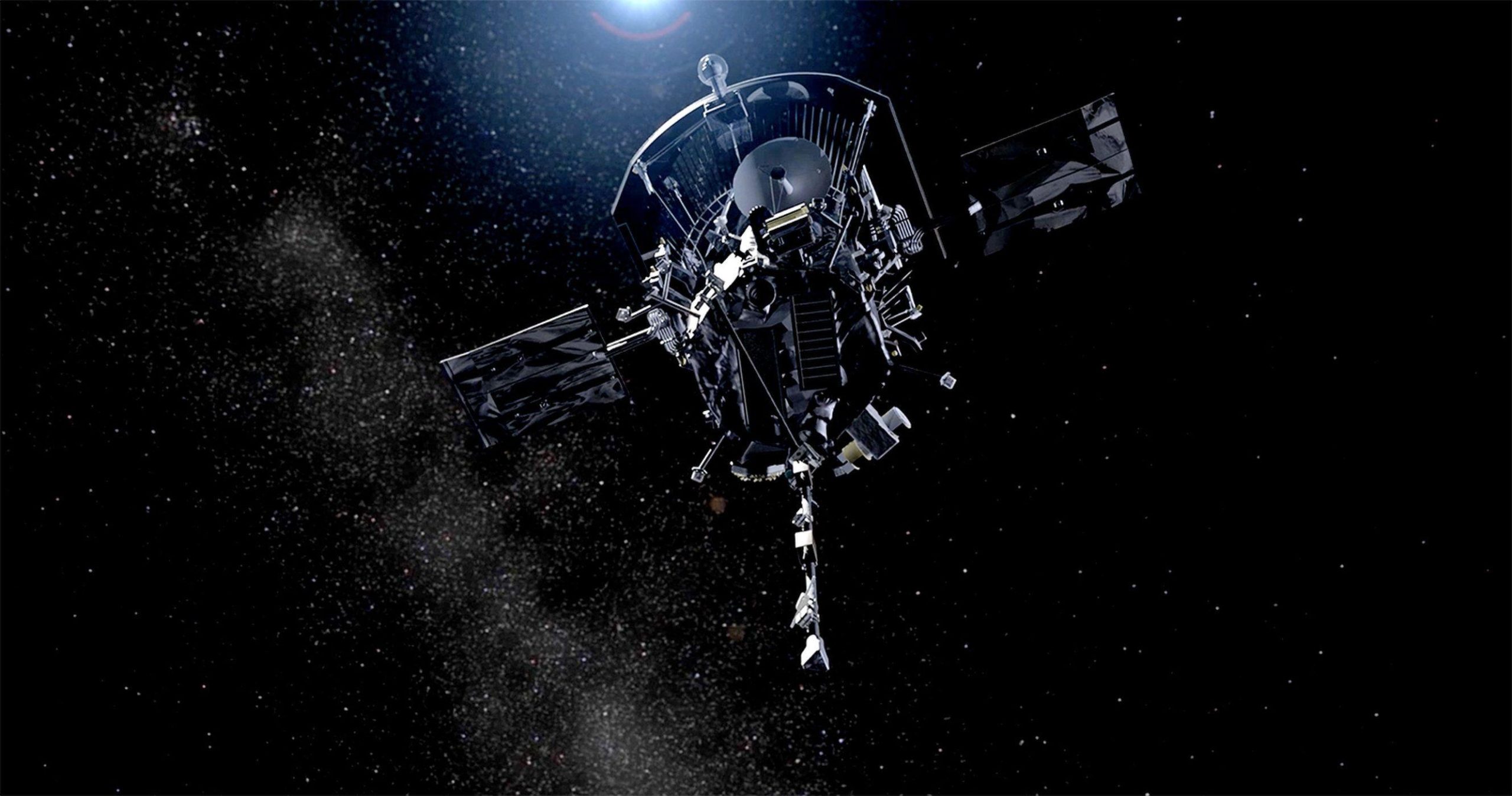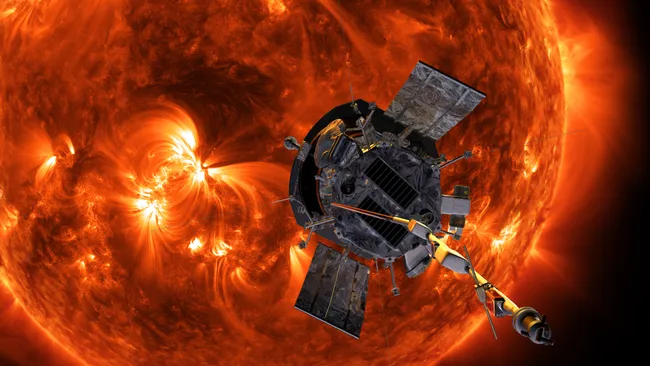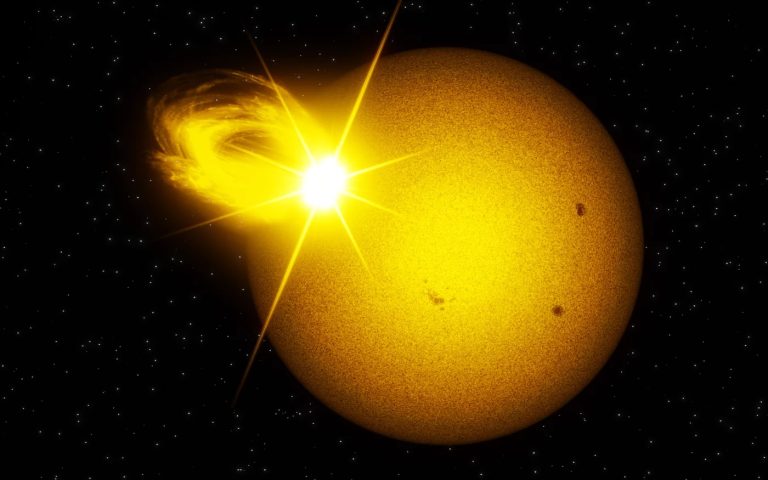Parker Solar Probe: Daredevil NASA Spacecraft Endures Second Intense Flyby of the Sun
The Parker Solar Probe is breaking all records with its daring journey close to the Sun. By flying nearer than any spacecraft before, it is gathering important data on the solar wind, corona, and the overall behavior of our star. This information is essential for better predicting space weather and may help protect future missions and our technology on Earth.
Summary
- The Parker Solar Probe completed a historic second flyby of the Sun at an extremely close distance.
- NASA’s innovative heat shield technology lets the probe face the intense heat of the Sun.
- The spacecraft travels at incredible speeds, setting new records.
- Four advanced scientific instruments onboard are gathering data about solar wind and the Sun’s outer atmosphere.
- This mission involves collaboration with over 40 partner organizations from around the country.
- The collected data will improve our understanding of space weather and its effects on Earth.
- NASA’s team earned the 2024 Robert J. Collier Trophy for their achievements.
- Future missions are planned to push the boundaries of our knowledge even further.
Good news: Parker Solar Probe phoned home! ☎️
The spacecraft is in good health after its latest swing through the solar corona. On this pass, Parker matched the distance and speed records that it set during its previous solar flyby in December.https://t.co/CbRGx8uef1 pic.twitter.com/YofJEGUDf2
— NASA Sun & Space (@NASASun) March 25, 2025
Introduction
The Parker Solar Probe is on a daring mission to study our Sun like never before. Launched in 2018 by NASA, this spacecraft is designed to travel closer to the Sun than any human-made object, breaking records in speed and proximity. It has already amazed scientists with its first flyby and is now returning for its second, making history once again. The mission aims to unlock the many mysteries of our star by collecting data that could change the way we understand solar behavior and space weather.
Mission Overview
The Parker Solar Probe’s mission has several goals. One of the main objectives is to capture detailed measurements of the solar wind and the corona—the outer layer of the Sun’s atmosphere. The probe’s instruments are carefully calibrated to measure things like magnetic fields, plasma waves, and energetic particles. These measurements are critical for revealing why the solar corona is much hotter than the Sun’s surface.
NASA’s team designed the probe with a special thermal protection system. This system includes a groundbreaking heat shield that lets the spacecraft withstand the extreme temperatures it encounters while flying so close to the Sun. The shield allows the probe’s scientific instruments and electronics to operate safely at room temperature even in the most scorching conditions.
Mission Specifications
| Parameter | Value |
|---|---|
| Closest Approach | 3.8 million miles |
| Speed | 430,000 mph |
| Launch Year | 2018 |
| Mission Duration | Ongoing, with planned flybys |
Scientific Contributions
The data collected during the flybys is expected to shed light on long-standing mysteries about the Sun. Scientists use this data to improve computer models that predict space weather. When solar storms occur, they can affect communications and power grids on Earth. The accurate forecasting of these events is essential for the safety of our modern infrastructure.
The instruments on the probe measure a range of phenomena, including:
- The strength and direction of magnetic fields in the solar corona.
- The behavior of the solar wind as it moves away from the Sun.
- The temperature differences between the Sun’s surface and its outer atmosphere.
Collecting these measurements helps scientists better understand the dynamics of our star and may soon answer the question: Why is the corona so much hotter than the Sun’s surface? The findings will also help us learn more about other stars and the conditions that exist in distant parts of our universe.
Congratulations to the entire team! Parker Solar Probe operates closer to the Sun than any other spacecraft has ever ventured, at faster speeds than have ever been achieved — all to help us understand how our star affects Earth and the other planets. https://t.co/7rEVh4qKE9
— NASA Solar System (@NASASolarSystem) March 25, 2025
Technological Breakthroughs
NASA has achieved remarkable advances with the Parker Solar Probe, particularly in its thermal protection system. The probe’s heat shield is made from a special carbon composite material that can handle the extreme heat of the Sun. This innovation is essential to the mission’s success.
The probe has also advanced data collection technology. Its instruments are designed to sample the solar wind and magnetic fields with high precision. These tools provide a window into the physical processes at work in the Sun’s outer layers.
Technology from the Parker Solar Probe may soon be used in other space missions. This could lead to better-designed spacecraft that can explore harsh environments in deep space. The knowledge gained here is not only important for science but may also help improve safety measures for future space travel.
Achievements and Recognitions
The Parker Solar Probe has not only gathered groundbreaking scientific data but has also earned significant recognition. The mission was awarded the 2024 Robert J. Collier Trophy, an honor given by the National Aeronautic Association. This trophy is a testament to the innovation and determination of the team involved.
Below is a table summarizing the achievements of this mission:
| Achievement | Details |
|---|---|
| Record Close Flyby | Second close approach at 3.8 million miles from the Sun |
| Award Received | 2024 Robert J. Collier Trophy |
| Team Collaboration | Involves NASA, Johns Hopkins Applied Physics Laboratory, and 40+ partners |
| Future Flyby Schedule | Next flyby planned for June 19 |
Future Prospects
The mission is set to continue with more flybys planned over the coming years. Each encounter with the Sun is designed to collect even more detailed data. The future flybys will help scientists build better models of solar activity and improve our overall understanding of space weather.
The team behind the Parker Solar Probe is already planning upgrades and new instruments for future missions. This continuous improvement may lead to safer and more efficient exploration of the space environment near the Sun. As this mission progresses, more surprises and new discoveries are sure to emerge.

The lessons learned from the Parker Solar Probe will guide the design of future spacecraft. This means that upcoming missions could explore even more extreme environments, bringing us closer to understanding the universe around us.
Facts
- The probe travels as fast as 430,000 miles per hour, a record speed for any human-made object.
- Its heat shield is so advanced that it can withstand temperatures nearly 2,500°F while protecting instruments at room temperature.
- Despite its small, car-sized design, the spacecraft packs a lot of technology and scientific instruments.
- The Parker Solar Probe has redefined what we think is possible in space exploration.
- Its mission is one of the first to study the Sun from such close proximity, opening up new avenues in solar research.


